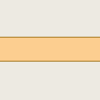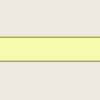Proposal:Cycle Hierarchy
| Cycle Hierarchy | |
|---|---|
| Proposal status: | Abandoned (inactive) |
| Proposed by: | ahmster |
| Tagging: | <multiple>=<multiple>
|
| Statistics: |
|
| Rendered as: | I don't know what I must write here |
| Draft started: | |
| Proposed on: | 2013-09-29 |
Page to define road hierarchy for cycles.
Road hierarchy is defined by the set of tags highway=*. Theses tags are used to describe road hierarchy for cars. Cycle circulation is different, this page presents a proposal of set of tags to define road hierarchy for cycles.
Warning
This page is a proposal of tags to define cycle hierarchy of roads. It is done to discuss about. Nothing is definitive and you are welcome to help to perfect it.
Discussion about why and how.
Road hierarchy is based on the concept of several levels of circulation networks, therefore on the concept of circulation plan. This consists of define where to pass to go at a place from an other, according to importance of the journey.
For motorized vehicles, road hierarchy is defined by the set of tags highway=*. We can found definition of circulation networks in the definition of theses tags :
- highway=primary : A major highway linking large towns.
- highway=secondary : A highway which is not part of a major route, but nevertheless forming a link in the national route network.
- highway=tertiary : Roads connecting smaller settlements, and within large settlements for roads connecting local centres.
- highway=unclassified : Minor public roads typically at the lowest level of the interconnecting grid network.
- highway=residential : Roads accessing or around residential areas.
- highway=service : Road for access to a building, motorway service station, beach, campsite, etc.
So we have :
- A first network tagged with "primary" and "secondary", used to wide range circulation.
- A second network tagged with "tertiary", used to medium range circulation.
- A third network tagged with "unclassified" and "residential", used to local circulation.
- Roads not included in a circulation plan (because it don't support circulation but only access) are tagged with "service".
In addition, there is networks of motorways and trunks, witch are specific networks. This categorization is maintained for cycle hierarchy.
In industrialized countrys, road is adapted to car usage since decades. That is why roads fits with circulation. We can read car circulation plan looking at aerial pictures : road belong to first circulation network are always bigger an well equipped than roads belong to the local circulation network.
Despite the fact that road characteristic are confused with circulation plan, that are 2 different concepts.
Non motorized vehicles don't have the same circulation plan, and the road is not adapted for theses vehicles. In this case the circulation plan don't fit characteristic of the road and we must define road hierarchy separately. We can see that there is some place where cycles have to deal with adversity, because road is not adapted. So we need tags to describe theses difficulties and dangers. There is no equivalent for theses tags in car circulation because similar cases of danger or difficulties don't exist.
This page presents a proposal set of tags to define road hierarchy based on circulation plan for cycles.
In this page, we speak about circulation plan, therefore the use of cycle as vehicle. There is other uses of cycles, as sport or leisure. Sport and leisure don't have destination to reach, the way they take is decided looking characteristic of the road (with or without slope, bucolic, etc.). Tags for define circulation plan are useless for theses uses, and it is more efficient to use tag defining characteristic of the road, and note itinerary of interest with relations.
Set of tags.
Oneway=yes/opposite are valid for cycles. Theses tags affect the circulation but not the hierarchy of the circulation. It is possible to have an itinerary to go from a town to an other witch take a road in one direction (because it is shorter and go down strongly) and take an other road in the opposite direction (because it go up smoothly and longer). This is true without oneway circulation on the road. In this case we have a strong slope witch is "primary" in the down way and "unclassified" in the up way, and a smooth slope witch is "primary" in the up way and "unclassified" in the down way. There is other reason to have a difference of hierarchy or danger depending of the direction, for exemple if there is a cycle lane only on one side. That is why we can add :left or :right at hierarchy tags.
We can add :both at a hierarchy tag to force validity of the tag in both directions despite a tag "oneway", in transgression of highway code. This addition is enabled only on tags hyghway:cycle=primary/secondary/tertiary. Don't forget to put a tag highway:cycle=dangerous:left/dangerous:right when it-s needed. Of course, :both may be use only on very specific case, for exemple when an oneway road come to a traffic light junction and there is a cycleway stopping few before the junction. Cycles have to ride on the road in the forbidden direction when the traffic light is red to reach the cycleway. Other exemple : when a good, quiet and safe itinerary use a SMALL part of a residential street very quiet in the forbidden direction and all others itinerary are more dangerous. Road and highway code are not designed for cycles, we may have to adapt ourselves.
Exemples of rendering are just some exemples. This proposal concerns tags, not render.
Definition of danger.
Danger don't come from the road but from cars on the road. We will search road characteristic with influence on car behviour.
| Tag dof danger | Criterion of danger |
|---|---|
| statistic | This part of road is identify as dangerous looking at police statistics of cycle accidents. |
| trunk | This road looks like a trunk but is not a trunk (same size, same layout, same speed of cars, same quantity of cars), for exemple a ring road. |
| cumbersome | This part of road cause impatience of cars. To put this tag you need both a high desity of cars, a high speed difference between cars an cycles and too less overtaking opportunities in correct conditions. Typically when there is a traffic island. Danger is strengthen if side of the road avoid cycle ro tide on in emergency (ditch, rocks, edge of sidewalk, barrier on the edge of sidewalk, etc.). |
| visibility | This part of road is with short visibility. To put this tag you need both a high speed difference between cars an cycles, a short visibility looking at speed of cars (bend, top of slope, etc.) and low place on the road (cars can not do a sudden deviation to avoid cycle in emergency). Danger is strengthen with low density of cars : they go faster and careless when they are alone on the road. Danger is strengthen if side of the road avoid cycle ro tide on in emergency. Danger is strengthen with low luminosity (tunnel). |
| stress | This part of road let less time at the car driver, and/or sature him with informations. Typical exemple is roundabout, or big and complicate intersections. To put this tag you need both high density of cars and complicated design of the road and/or close formation of particularities. Danger is strengthen with short visibility. |
| particularity | This part of road or path is with something known as dangerous for cycles, for exemple proximity of a lane of parked cars where car doors ca be opened inoportunly. |
| fall | Design of this part of road or path increase risk of fall or consequencies of fall. For exemple a narrow path at the edge of precipice or river. |
| motorcycle | This tag can be put on a cycleway if there is too many motorcycles on. |
Arguments and discuss.
Path depends of cyclist.
- You can found this argument on page FR:Bicycle
"Two cyclists don't have same definition of "good" itinerary. Some search only cycleway, others search shorter way, other search flat riding, other searche lot of slopes."
- Discussion
It's true, for cars as for cycles. Withs car someone search faster way, others search avoid to pay tax on motorway, other search quiet an bucolic roads, etc. This don't avoid us to define circulation plan with tags highway=*. This must not avoid us to define circulation plan for cycles.
Itinerarys must be extract from road characteristics.
- You can found this argument on page FR:Bicycle
"Here, OSM find all it's strength. It can catch all datas interesting cylces, and everyone can choose his better itineraray."
- Discussion
- It could be done but difficult for car circulation, because characteristic of roads fits car circulation plan. We can probably guess car plan circulation looking at characteristic of road.
- Road is not adapted for cycles, and cycles ride at places more diverses than cars (roads, paths, cycleways). Make a renderer soft computing witch ways color in red an with others color in white from road characteristic could be extremely complicated. And the problem is the same for routing engine. Search your way with your brain from road characteristic is a hudge work.
- For exemple, how guess speed difference between cars an cycles from road characteristics ? How compute visibility ? (We can compute from relief if we have well precision, and we don't have this precision now. It is more difficult to compute from vegetation.) Theses factors are essential to define danger.
- Do that need hight quantity of detail information about roads and paths (surface, width, ridability of side, etc.). We can not hope to have all theses datas in the database before long long time.
All of that is subjective.
- Discussion
It is true, but no more than other existing and well accepted tags. For exemple :
- Define witch roads and paths support major circulation for cycle is no more and no less subjective than define witch roads support major circulation for cars.
- Define that a part of road or path is difficult or dangerous for cycles is no more and no less subjective than define level of difficulty for mountain bikes with mtb:scale tags. In both cases we need to define some observable criterions.
Describe territory, only territory.
"In OSM we describe what are things, theses tags describe what cycles do withs roads."
- Discussion
Define circulatio plan for cycles with theses tags, it is describe what cycles do with the road. Define circulatio plan for cars with highway=* tags, it is describe what cars do with the road. Highway=* tags are define according to car circulation plan, not according to road characteristics (for exemple, in Madagascar, highway=primary are frequently some clay tracks). Characteristic of road are defined with other tags.
Use relations.
"To define cycle itinerary, we have to do as for other itinerarys : use relations."
- Discussion
We can do that. To define cycle circulation plan with relations, we have to make a relation for each part of each circulation network (long rage circulation, medium rage circulation, local circulation). If we do that, just about all roads will be include in relations. That is pretty much the same than use tags but more difficult to edit.
Make a separate database.
"Cycle plan circulation don't have his place in OSM. Cycles have to make a separate database where they will put all their tags of cycle hierarchy."
- Discussion
We have to discuss and decide this point.
Why do we accept circulation plan for cars an not for cycles ? We can think same question will be put for foot or wheelchair circulation.
Test zone.
A test of this set of tag was done in the zone of this changeset : https://www.openstreetmap.org/browse/changeset/17628157 You can go to have a look. Somewhen it will be time to erase theses tags if the set of tag is reject or modify theses tags if the set of tag is made better.
A sample of rendering can be seen on this poster : http://www.suna.fdn.fr/OSM/hierarchie-cyclable-V3-EN.odp This poster is just an example of what we can do whith theses tags. This exemple is a draft, it is not perfect and it is not exculsive. The proposal concern tags and no render.





